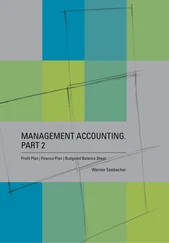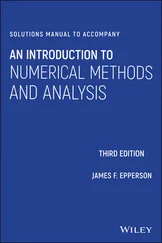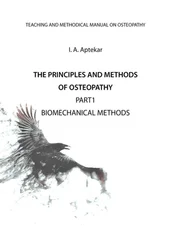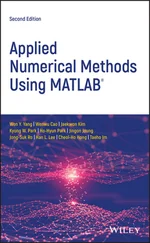Daniel J. Duffy - Numerical Methods in Computational Finance
Здесь есть возможность читать онлайн «Daniel J. Duffy - Numerical Methods in Computational Finance» — ознакомительный отрывок электронной книги совершенно бесплатно, а после прочтения отрывка купить полную версию. В некоторых случаях можно слушать аудио, скачать через торрент в формате fb2 и присутствует краткое содержание. Жанр: unrecognised, на английском языке. Описание произведения, (предисловие) а так же отзывы посетителей доступны на портале библиотеки ЛибКат.
- Название:Numerical Methods in Computational Finance
- Автор:
- Жанр:
- Год:неизвестен
- ISBN:нет данных
- Рейтинг книги:4 / 5. Голосов: 1
-
Избранное:Добавить в избранное
- Отзывы:
-
Ваша оценка:
Numerical Methods in Computational Finance: краткое содержание, описание и аннотация
Предлагаем к чтению аннотацию, описание, краткое содержание или предисловие (зависит от того, что написал сам автор книги «Numerical Methods in Computational Finance»). Если вы не нашли необходимую информацию о книге — напишите в комментариях, мы постараемся отыскать её.
Part A Mathematical Foundation for One-Factor Problems
Chapters 1 to 7 introduce the mathematical and numerical analysis concepts that are needed to understand the finite difference method and its application to computational finance.
Part B Mathematical Foundation for Two-Factor Problems
Chapters 8 to 13 discuss a number of rigorous mathematical techniques relating to elliptic and parabolic partial differential equations in two space variables. In particular, we develop strategies to preprocess and modify a PDE before we approximate it by the finite difference method, thus avoiding ad-hoc and heuristic tricks.
Part C The Foundations of the Finite Difference Method (FDM)
Chapters 14 to 17 introduce the mathematical background to the finite difference method for initial boundary value problems for parabolic PDEs. It encapsulates all the background information to construct stable and accurate finite difference schemes.
Part D Advanced Finite Difference Schemes for Two-Factor Problems
Chapters 18 to 22 introduce a number of modern finite difference methods to approximate the solution of two factor partial differential equations. This is the only book we know of that discusses these methods in any detail.
Part E Test Cases in Computational Finance
Chapters 23 to 26 are concerned with applications based on previous chapters. We discuss finite difference schemes for a wide range of one-factor and two-factor problems.
This book is suitable as an entry-level introduction as well as a detailed treatment of modern methods as used by industry quants and MSc/MFE students in finance. The topics have applications to numerical analysis, science and engineering.
More on computational finance and the author’s online courses, see www.datasim.nl.
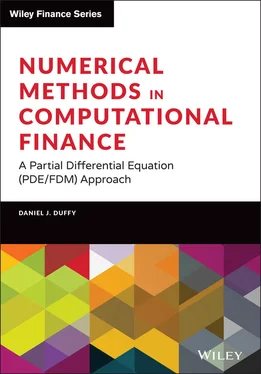

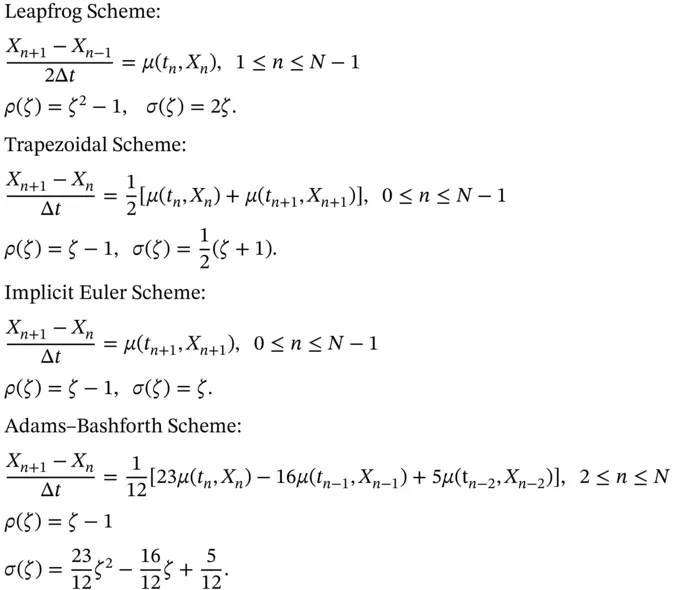
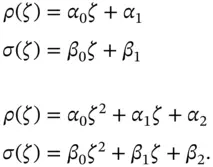


 ), the latter including no arbitrary constant. The stiffness in the above example is caused when the value a is large; in this case traditional finite difference schemes can produce unstable and highly oscillating solutions. One remedy is to define very small time steps. Special finite difference techniques have been developed that remain stable even when the parameter a is large. These are the exponentially fitted schemes , and they have a number of variants. The variant described in Liniger and Willoughby (1970) is motivated by finding a fitting factor for a general initial value problem and is chosen in such a way that it produces an exact solution for a certain model problem. To this end, let us examine the scalar ODE:
), the latter including no arbitrary constant. The stiffness in the above example is caused when the value a is large; in this case traditional finite difference schemes can produce unstable and highly oscillating solutions. One remedy is to define very small time steps. Special finite difference techniques have been developed that remain stable even when the parameter a is large. These are the exponentially fitted schemes , and they have a number of variants. The variant described in Liniger and Willoughby (1970) is motivated by finding a fitting factor for a general initial value problem and is chosen in such a way that it produces an exact solution for a certain model problem. To this end, let us examine the scalar ODE:

 has not yet been specified. We determine it using the heuristic that this so-called Theta method should be exact for the linear constant-coefficient model problem :
has not yet been specified. We determine it using the heuristic that this so-called Theta method should be exact for the linear constant-coefficient model problem :
 , we get the value (you should check that this formula is correct; it is a bit of algebra). We get:
, we get the value (you should check that this formula is correct; it is a bit of algebra). We get: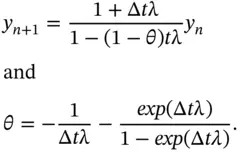
 for which all discrete solutions of the model problem (2.43)remain bounded when n approaches infinity.
for which all discrete solutions of the model problem (2.43)remain bounded when n approaches infinity.
 we have
we have  , and this condition can be checked using the scheme (2.42)for the model problem (2.43).
, and this condition can be checked using the scheme (2.42)for the model problem (2.43).
 and A is a constant
and A is a constant  matrix with eigenvalues
matrix with eigenvalues  and eigenvectors
and eigenvectors 

 are arbitrary constants and
are arbitrary constants and  is a particular integral. In this case we can employ exponential fitting by fitting the dominant eigenvalues which can be computed by the Power method , for example.
is a particular integral. In this case we can employ exponential fitting by fitting the dominant eigenvalues which can be computed by the Power method , for example.

